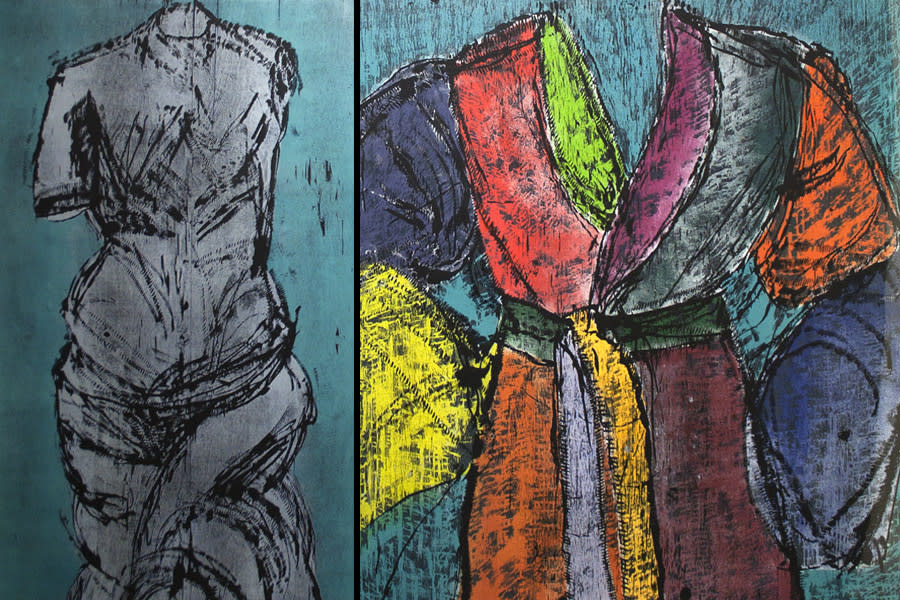
Stuart Davis, an American early modernist painter, was born in the United States. His work can also be classified into two types, jazz-inspired protopop art pictures and early 20th century photographs, such as pictures of the Ashcan School. This article will provide information about the artist's early Cubist style as well his relationship with RoselleSpringer.
Artist biography
Stuart Davis's artist biography begins with his childhood years. These were full of artistic endeavors. His father, a newspaper editor and his mother, a sculptor were both involved in the arts and encouraged him to pursue it. Davis started drawing at an early age. He illustrated books for Wyatt, his younger brother. Davis quit school as a teenager to study art in New York City. He met Robert Henri, a prominent figure in the American Realist movement, and became active in leftist politics.
Davis was an artist who began to incorporate modernism and other avant-garde styles into his work. His work shifted to still lifes and abstract landscapes in the 1920s. Additionally, he used subject matter that he had already painted before, such as Gloucester Harbor, Massachusetts, and variations of the theme of sea.
Cubist style in the early days
Stuart Davis' Early Cubist style was influenced heavily by the Paris School's art and is evident in the compositions. His paintings, such as 'Deuce', are a good example of this style. Davis lived and worked as a collage artist in Paris. He was also a member of the Society of American Graphic Artists, and he was represented by the New York gallery, Downtown Gallery. 1964 saw the U.S. Based on his work, the U.S. Postal Service issued an stamp called "Detail Study For Cliche".

Davis became more focused on Paris after moving there. His work evolved towards a more linear structure. He often used multiple words to express rhythm. Places des Vosges Number 2 (1828) juxtaposes lines and colors on a lightly-textured surface. This painting shows his mastery at rendering rhythmical counterparts of visual phenomena.
Transition from abstract style to transition
After years spent immersed in realism for many years, the artist started to explore abstract paintings as a way of expressing himself. Davis's 1960s aesthetic, dispersed shapes over a canvas, and bold colors were paired with each other to eliminate any central focal point. This allowed the viewer to move freely. It was also an important step in the direction of complete abstraction as pioneered by Jackson Pollock and Abstract Expressionists. Moreover, Davis's appropriation of everyday consumer items into works of high art, notably advertisements, prefigured the Pop art movement of the 1960s.
After graduating the Art Student's League, Davis joined The Masses, an arts magazine of left-wing politics that featured John Sloan Ashcan artist. Davis set up a studio in Hoboken after leaving Henri's School. In 1918, Davis was drafted into the First World War, but he chose to stay in New York where he worked for the Army Intelligence Department.
Roselle Springer: Relationship
The turbulent relationship between Stuart Davis and Roselle springerin in the 1930s was one of love. Davis was an active artist in New York's art scene. However, he also participated in political activism. He was associated with Ashcan'socialism' and was president of the Artists' Union in 1934. In 1938, he married Roselle Springer.
Davis, an internationally renowned abstract painter, was also the founding father of the Pop arts movement. His father Edward Wyatt Davis (newspaper art editor) was the one who hired future members of The Eight anti-academy organization. In 1909, Davis dropped out of high school and studied under Henri in New York. Davis soon became involved with leftist politics, and he took up jobs at socialist weekly magazines.

Influence of European avantgarde art
Davis's style is similar to the avant-garde movements like Cubism in Europe. Many of his subjects were identifiable structures. Davis's art often rejected the ideal of beauty and instead focused on individual expression. Davis explored simultaneity, and geometricity like Picasso. He reduced familiar landmarks to flat, geometric shapes and colorful patterns, but never succumbed to complete abstraction.
Davis was inspired and made friends with avant-garde artists in Europe. Davis made friends with John Sloan an anti-institutionalist and attended 1913 Armory Show. Davis gained a new perspective by experiencing avant-garde work firsthand. It helped him integrate modernism’s color and formal advances.
FAQ
What are examples of pop culture today?
Pop Culture refers to the art form of 21st century. Pop Culture covers all aspects of popular entertainment. It includes music, film, TV, video game, fashion, advertising, comics and so on. This term was created by Neil Postman, author of Amusing Ourselves and Death (1985). Pop refers to mass communication that uses formulaic and cheap tricks to create an illusion or spontaneity.
However, he said that most people don’t enjoy true enjoyment because their culture has conditioned them to want media experiences that make it seem superior to others. In addition, he argued that this type of cultural expression had contributed to the loss of critical thinking skills among young adults.
Pop culture can also be referred to by the terms popular culture or consumerism.
Who invented the word Pop Music?
Frank Zappa invented it. His style of music was described by Frank Zappa using the term pop music.
He said that his goal was to make music that is accessible to everyone. That's why he called his music pop music.
Zappa also came up with the phrase "You can tell it's popular when ..."". This means that something is very popular if people love it. Michael Jackson's Thriller album, for example, is one of his most popular albums.
Zappa's definitions for pop music are quite different from the current. Pop music today includes all kinds of music. Back then, pop music was limited to certain types of music.
How did pop culture develop?
Technology was key to the rise of popular culture. As people became more mobile, it developed. Mass communication was made possible by the invention of radio. This led to the rise of television which then gave birth to the internet.
People started using computers at home and were exposed to computer games. These games were first played on consoles such as the Nintendo Wii or Sony Playstation 3. You can now download them online for free. Many people are choosing to play video games over watching TV.
Video games are extremely popular with teenagers and kids. You can play alone or with other people via the internet. Games like Call Of Duty and Grand Theft Auto are extremely violent. Some parents worry about their children playing these games. Others find it interesting to see what happens if a character dies.
Music videos are another way pop culture influences youth. They feature celebrities and information about current trends. Young people enjoy watching them. Music plays an important part in our lives, there's no question about that!
Music videos are often created by artists who use special effects to enhance their songs. For example, rappers wear wigs and makeup to look more attractive. Some musicians have to go through extreme physical and mental challenges in order show their bodies. Many singers perform while wearing costumes.
Today, there's so much choice in music. You can find any type of music that you desire. This is not always good news. Music can sometimes encourage violence. People become angry when they hear certain lyrics and words. Sometimes, they even do crimes.
This happened recently with rapper 50 Cent. One line in his song Get Rich Or Die Trying says: "I'm going after a motherfucker / But I don't know how, but I might." This song was thought to mean that he would murder someone. He was threatened by a man who called him. 50 Cent updated the lyrics. It now only says: "I will shoot a bitch/ I don’t understand why but I just might."
Popular culture is essential. We need to be able to see how it affects our lives. If we don’t know how it affects our lives, we won’t have the ability to protect ourselves from its negative consequences.
How did pop music get started?
It was an accident. The first song was written by mistake when someone accidentally knocked over a piano while playing around on New Year's Eve in 1920.
The recording company liked what they heard and decided to release it as a single.
This was the first hit single.
Pop music is today the most popular form musical entertainment.
What are examples of pop culture in 2021?
Two hijacked planes crashed into the Twin Towers of New York City's World Trade Center on September 11, 2001. 9/11 was the day that would change history.
These events have had a profound impact on popular culture, and they continue to have an influence today. The event can be seen in many ways as it has influenced our lives.
This includes television shows such as 24 and movies such as United 93, which tells the story of what happened during the flight from Boston to Los Angeles on 9/11. You can also find books such as The Forever War, by Dexter Filkins.
Everybody can recall exactly where they were when the attack occurred. Some people got out of bed and went outside; others watched the TV or read newspapers.
Pop culture is something that changes every year. Pop culture is a reflection of society and an inspiration. How will popular culture change next year? It's too early to tell. We do know it will be better than it was before.
What can I do to use pop culture in my marketing strategy
It is important to study the trends to see how pop culture can be used in marketing strategies.
Let's take, for example, the promotion of a new movie. What type promotion could your company run?
You could make a trailer using clips taken from the movie. You could also find a clip featuring one of your products/services and include it in the trailer.
Perhaps you could make a parody of the trailer with other films.
A promotional campaign could be created based on the plotline of the movie if you were promoting a product/service that is related to the movie's theme. For instance, if the movie is set in outer space, you might want to advertise a product that helps astronauts stay healthy while traveling through space.
You could promote your business based on the movie's storyline if it was connected. A company that sells food could give away free samples to customers who book tickets to see the movie.
What can pop culture teach us about ourselves?
Today's society values material possessions over all else. This is especially true with young people. They spend hours daily looking at screens. They watch movies, play video games, and surf the web. All of these distract them from the task at hand, which is to complete school work. They end up failing classes as a result.
In today's world, everyone wants to be accepted. That means being popular. Popularity hinges on having money, clothing, and other possessions. Some people do this by doing things that aren’t right.
We have become too dependent on technology. We have all the information we need thanks to technology. Not everything is accurate. False rumors are all over the Internet. These rumors are quickly spread by people sharing them on social media. It's easy to post something without checking whether it's true.
People have lost their ability to think critically. They believe whatever they read on the Internet. They believe what they see on TV and in magazines. They stop thinking about themselves. Instead, they follow the flow of others.
We lose control over our lives when we rely upon others to tell the truth. Pop culture teaches you to depend on others. It also makes us lazy. The truth is out there, but we don't always find it.
Statistics
- For example, the term hater meaning someone who strongly undermines or criticizes others, often due to pathetic jealousy, likely emerged from hip hop culture, such as the term playa hateras, used by influential rapper Biggie Smalls as early as 1995. (simplicable.com)
- According to Dictionary.com, popular culture, or low culture as it is sometimes referred to is comprised of the “cultural activities or commercial products reflecting, suited to, or aimed at the tastes of the general masses of people” (7/21/19). (socialsci.libretexts.org)
- According to CNBC.com, “more than 70% of the film's revenue came from countries outside the US” (https://www.cnbc.com/2019/01/08/aqua...nal-sales.html, ret. 8/18/19). (socialsci.libretexts.org)
- In 1987, US films captured 56% of the European film market. (socialsci.libretexts.org)
- [17][18][19]Definition[edit]According to author John Storey, there are various definitions of popular culture. (en.wikipedia.org)
External Links
How To
What is pop culture in films?
Popular Movies Culture includes all aspects entertainment such as books, magazines, newspapers and television programs. It also includes websites, blogs, social media, apps, gaming, and other media.
Movies can be categorized into several types: comedy, drama, horror, action/adventure, fantasy, science fiction, romance, thriller, war, documentary, animation, and westerns.
Movie plots generally follow a pattern of predictable events that conclude with a satisfying resolution.
How well a film follows this formula will determine its success.
Here are some common plot points:
-
A protagonist who has to overcome obstacles in order achieve his/her goal.
-
An antagonist who opposes the protagonist throughout the film;
-
A moral dilemma that requires the protagonist to make a decision;
-
A twist that changes everything
You may have to reevaluate the outline or concept of your story if it doesn't fit within one of these categories before you start writing.
The following questions will be of particular importance:
-
How do I establish my setting?
-
What does my protagonist want?
-
Why should readers care?
-
Where is my story heading?
-
Who is my main character?
-
Will there be conflict?
-
What is the climax
-
What's my resolution?
-
Is the end happy or sad?
-
Do I have to introduce new characters
-
Are there multiple settings for my story?
-
Are there subplots?
-
Are there major themes?
-
Is it possible to tell a complete story in just one chapter.
-
Can I use dialogue effectively?
-
Does my language sound clear and simple?
-
What is the context for my vocabulary?
-
What if I have used active voice, instead of passive?
-
Are there spelling errors?
-
Is my grammar correct?
-
Are there too many adverbs?
-
Is there anything I could do to improve this?
-
What's my first impression when I'm finished editing?
It's not enough to write a good novel, it is also your job to get it published.